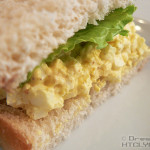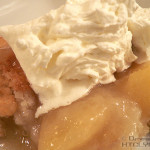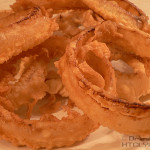Every time I tell someone I keep my bacon grease I get two kinds of responses. “Oh my God, are you serious? That’s so gross!” — or — “Wow, I didn’t know anyone else still did that. My mother/grandmother always had a can of it on the stove.” Sometimes I’d get both reactions at the same time … from the same person.
But every now and then, I get something that just goes above and beyond the normal reactions. Something that shows the difference between being involved and being committed. (If you haven’t heard the joke before: The chicken is involved in breakfast, the pig is committed.)
I’ll let Joseph Croft take it from here.
I love your book and your “Cook Like Grandma” blog! It’s great to know there’s others out there like me, who reject the “fat Nazis” and their poor-quality fat replacements.
I wanted to let you know I’ve discovered a really great method for making surplus bacon (and sausage) grease into good, clean, usable, lard. I already have a jar of bacon grease set aside for yummy bacon-greasy uses, of course, but I also have a wide-mouth quart jar next to the stove that extra bacon grease, and all other pork fat, goes into. Bacon grease, sausage grease, even Spam grease! If it’s pork fat, it goes in the jar!
When the jar is full, add the quart of fat with 3-4 quarts of water, in an 8 quart stock pot (plenty of room to boil). Bring it to a boil and let it boil for about an hour. Then, refrigerate until the fat has solidified. (This works great during a Minnesota winter when I can just set the pot outside the back door for about an hour!)
Side Note — I really like the refrigeration fat separation method much better than horsing-around with separating hot liquids. I do this to all my stocks as well. After simmering my turkey carcass all day long, I just set the pot outside overnight. In the morning I scrape the solidified turkey fat right off the top with a spoon. Then, I warm up the broth enough to melt the gelatin (but not hot enough to burn myself if I spill) and dump it through a colander to get the bones and turkey goop out.
When the fat is solid enough, carefully scoop it out into another large stock pot. Do your best to get only the fat, but don’t sweat it if you get some of the water with it. Start again with another 3-4 quarts of clean water, and repeat the process.
You may feel the need to do this a third time, but two washes have worked fine for me.
Finally, scoop your clean, solidified, fat back into a clean pan (you can use a smaller 3-4 quart pan now). Put it over medium heat and keep an eye on it. It will start out very cloudy, but as you hit a magical point where the last of the water has been driven out, it transitions from cloudy to a beautiful, golden, crystal clear!
Cool slightly, then pour into a clean, wide-mouth quart jar for storage.
The finished product smells clean and fresh, with just a tiny hint of subtle smoky flavor. It doesn’t have as high a smoke point as a good rendered leaf lard, but I still use it for frying when I want a more delicate flavor than bacon grease. Also, it make truly awesome pie crusts, rolls, and biscuits! You can use it for any recipe that calls for lard.
Incidentally, exactly the same method works great for cleaning up beef tallow that has been used for frying several times. After this treatment, it’s as good as new!
Hope you can share this with your other readers!
Thanks,
Joseph Croft
This is Drew again. I haven’t tried this yet, but my experience tells me it should work. I guess that means I can eat more bacon now, without worrying what to do with the grease. Thanks Joseph, for the great tip.
Joseph also left a tip on a few of my posts dealing with beef tallow.
After dicing up the suet, I put it in the freezer for a few minutes, then ran it through a meat grinder. This step eliminates the need to horse-around with the potato ricer at the end!
Also, after bringing the ground suet and water mixture to a boil, I put a lid on it, and let it simmer on low heat for a good couple of hours. This extra cooking time really seamed to help break-down the suet nicely.
Now this is a guy who’s committed to using all his animal parts to their fullest.











